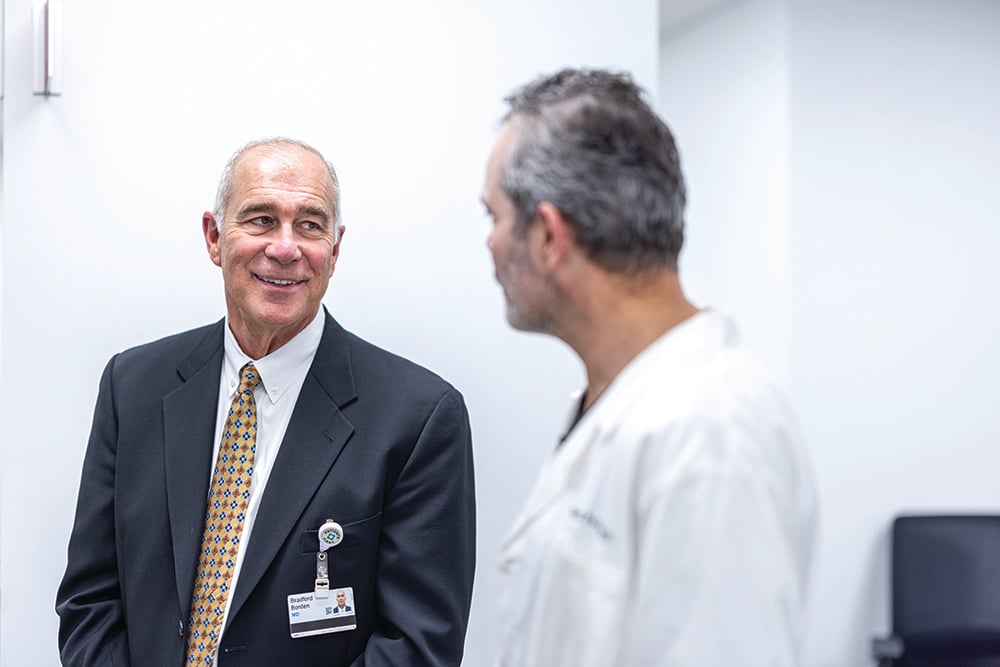COVER STORY
‘We Never Close’
By John Soeder
Dr. Brad Borden, left, confers with a colleague during the opening of Cleveland Clinic’s urgent care and outpatient care facility in Avon, Ohio. | Photo: Annie O’Neill

Q&A
Brad Borden, MD, FACEP, is vice chief of staff and chair of the Department of Emergency Medicine at Cleveland Clinic. In a recent interview, he offered a candid look at the pressures, innovations and lifesaving work happening every day in the emergency department.
How would you describe the role of emergency medicine in 2025?
We’re the front door to world-class care. Literally. About two-thirds of admissions at Cleveland Clinic come through our emergency departments. We’re open 24/7, 365 days a year. We never close. That’s what it means to be the safety net for our communities. We care for everyone: insured or uninsured, housed or homeless, those with primary care and those without. When people have nowhere else to turn, they turn to us.
What’s the biggest challenge right now?
Capacity. Our hospitals are full, and we’re boarding admitted patients in the ED. That means we’re often treating patients in nontraditional spaces. We call it “waiting room medicine.” It’s something I never thought I’d see in my career, but it’s become our new reality. It’s an issue nationwide. We’re doing everything we can to mitigate the risks because when you’re working with undifferentiated patients, the stakes are high. They could be having a heart attack or a blood clot in the lung. We need to get it right.
How has emergency medicine evolved in recent years?
The volume has grown, and the cases are more complex. Patients are older and have multiple health conditions. And with limited access to outpatient care, more people rely on us for everything from routine to critical needs. So we’ve had to evolve. We’ve pioneered innovations like virtual triage, where an off-site physician works with a nurse on-site to start the evaluation. We’ve medically screened — and in some cases treated — more than 300 patients in a single day that way. It’s fast and efficient, and other health systems are now looking to us as a national model.
Why is emergency medicine unique?
We deal in unplanned and undifferentiated care. Our patients don’t show up with a diagnosis; they show up with symptoms. It’s up to us to put the puzzle pieces together. We’re detectives. And we have to move quickly, because for some cases, time is everything. In a stroke or heart attack, every second matters. We’ve cut our door-to-balloon time — the time from a patient’s arrival to when a blocked artery is opened in the cath lab — for heart attack care in half compared to national benchmarks. That’s thanks to tight coordination, leading-edge technology and incredible teams in the emergency department and cardiology.
What part can philanthropy play?
Emergency medicine is often overlooked. People tend to remember the surgeon who fixed them but not the team that kept them alive, stabilized them and got them to the OR. We bring people back from the brink of death. And we do it quietly, without fanfare. Philanthropy helps us keep going. It supports equipment and facility upgrades, staff education, workplace safety and the creation of programs like our geriatric emergency unit. If you want to make a difference, consider supporting the place where care truly begins. We’ll be here — ready — whenever we’re needed.
